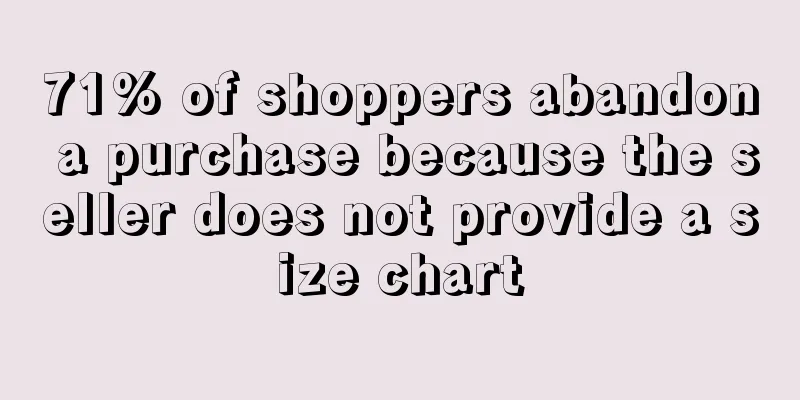Commissions have risen sharply! A group of Amazon sellers say they have been "backstabbed"

|
“ Amazon has kidnapped me. ”
Any fee increase will hurt the nervous nerves of Amazon sellers.
For most Amazon sellers, cost control has long been a compulsory course. From supply chain to advertising fees, cost-conscious Amazon sellers strive to find savings from every detail.
Some Amazon sellers even joked that since joining Amazon, they have become "stingy" and are pinching and pinching every day just to save a little bit of money.
However, even with such sophistication, sellers cannot withstand the platform's "backstab".
A number of sellers' product categories were modified, and their commissions also increased
Just after the National Day holiday, another seller fell into Amazon’s “fee trap”.
Recently, some sellers reported that their product categories were suddenly modified automatically, and the referral fee was also increased significantly. What happened?
According to the seller, he received an email a few days ago showing that Amazon had classified all of its products into a new category, and the commission for the new category was much higher.
"Is this fair? All my ASINs are industrial products and have nothing to do with home decoration. Why would the platform classify my products into this category? And it just so happens that it is a category with higher commissions. This is ridiculous. Amazon is simply the greediest company on earth." The seller complained.
Judging from feedback from other sellers, this is not an isolated case.
"Similarly, my category has been adjusted from industrial products to office supplies, and the commission has increased by 3%."
"Has everyone's product category been changed? I sell auto parts, but the platform changed it to home and kitchen supplies. The commission fee increased by 20%, and the annual cost increased by about $5,000."
“This is definitely another ploy by Amazon so they can charge more from small sellers, even though they don’t really care what category your product falls into.”
Another bookseller also complained helplessly, "I sell books, how can I be classified into other categories? This is really a bit outrageous."
In response to feedback from a large number of sellers, Amazon’s official response is: “Amazon regularly reviews the categories and fee standards of sellers’ ASINs. If you believe that the fee category is incorrect, you can raise an objection to the seller support department, and a dedicated team will then help the seller resolve the issue.”
Obviously, this statement cannot calm the anger of sellers. The worst seller said that hundreds of his ASINs were transferred to other categories and have not been restored yet.
A second-hand book seller said that the comic books he sold were adjusted to the home and kitchen category, and he wanted to know under what circumstances a book could be related to the kitchen.
Some industry insiders speculated that this situation probably occurred because the platform was testing a new function, and the adjustments to the categories of many sellers were probably caused by mistake. It is recommended that sellers who encounter this situation first open a case to report the situation to Amazon. If there is no suitable solution, wait a while, and it may recover automatically.
In addition to the category adjustments and fee increases, a group of sellers were also "backstabbed" by Amazon, but in a slightly different form.
There are precedents of sellers being "backstabbed" by Amazon
In the Amazon circle, the problem of following sales has always troubled sellers, and some sellers even had their listings scrapped due to following sales.
Although the behavior of copy-selling is despised by most sellers, it still complies with the platform's regulations. Sellers usually do not have a particularly good way to stop copy-selling.
Being copied by others is certainly painful, but what makes sellers even more painful is being copied by Amazon’s own brands.
In fact, sellers are no strangers to the follow-selling behavior of Amazon's own brands. As early as 2020, sellers reported that they were followed by Amazon's own brands, and their listing sales plummeted.
This situation still exists today. A few days ago, another seller posted on the forum that his products were copied by Amazon’s own brands, and now his sales have been nearly halved.
When faced with this situation, sellers can be said to be in tears and don’t even know how to deal with it. They can’t complain to Amazon that their private label is reselling them.
Previously, a seller even missed the PD Member Day promotion because of copycat sales. At that time, a listing of this seller on the UK site was suddenly suspended on the eve of PD, and he did not receive any notification. Later, it was discovered that Amazon’s own sales copied his products and snatched the shopping cart.
Finally, after I reported the issue to customer service several times via email, the link was restored, and Amazon automatically cancelled the follow-up sale, but I missed the Member Day promotion completely.
For a long time, whenever Amazon's self-operated business is mentioned, most sellers are afraid. In the eyes of sellers, Amazon's self-operated business is both a referee and a contestant. How can other sellers have the strength to compete with it?
In 2020, Piper Sandler, a well-known foreign analysis agency, released a set of key data on Amazon Prime Day, which showed that Amazon is further eroding the market share of third-party sellers.
However, judging from the current trend, the power of third-party sellers on the Amazon platform is actually growing. According to MarketplacePulse data, Amazon's revenue from third-party seller services has reached a scale equivalent to 81% of its own business. In the second quarter of 2023, sales generated by third-party sellers accounted for 60% of Amazon's total sales, and third-party sellers' service revenue increased by 18% year-on-year.
If this trend continues, Amazon's third-party seller service revenue will surpass its self-operated business within two years. It is expected that by 2025, Amazon's third-party seller service revenue will reach the same level as its self-operated business.
Although Amazon has gradually reduced the proportion of its own business, as the size of the seller group has expanded, the commissions and logistics service fees charged by the platform to third-party sellers have also continued to increase. On the other hand, as the competition on the platform has become more intense, Amazon's advertising costs have also continued to rise.
Even if they have avoided the impact of Amazon's own operations, small and medium-sized sellers are still facing the pressure of rising costs. How to break the deadlock has become a difficult problem facing them. Amazon commission Seller |
>>: The US is strictly checking multiple consignees, and Amazon sellers are panicking
Recommend
What is sofeelwigs? sofeelwigs Review, Features
Sofeelwigs was founded in 2010 and has been in the...
Square acquires AfterPay for $29 billion to provide sellers with a “buy now, pay later” option
Mobile payments company Square will acquire Austr...
Tmall Global launches new business policy: four types of business models, 50% reduction in deposit for new merchants
On September 23 , Tmall Global announced its late...
What is Payoneer (P Card)
Payoneer (P card) is an institution authorized by...
Shopee’s 12.12 birthday sale kicks off, with the number of items sold by new cross-border sellers increasing 40 times in the first two hours
December 12, 2022, China - The leading e-commerce...
What is eGlobal Central? eGlobal Central Review, Features
eGlobal Central is a global online store that off...
Amazon Mexico expands “same-day delivery” to help sellers increase sales during peak season!
With the arrival of the end-of-year shopping seas...
What is Satchel? Satchel Review, Features
Satchel (Lithuanian Electronic Money Institution)...
Target launches Latino Heritage Month collection
To celebrate the upcoming Latino Heritage Month, ...
On Buy partners with LEGO to demonstrate market presence
Recently, OnBuy has partnered with the LEGO brand...
Has the impact of the epidemic been amplified? American e-commerce has been developing steadily
According to Marketplace Pulse research, even if ...
What is Zhongshang Huimin? Zhongshang Huimin Review, Features
China Commerce Huimin (Beijing) E-Commerce Co., Lt...
What is Jinbaotong? Jinbaotong Review, Features
JBT Logistics (Shenzhen JBT International Freight ...
With frequent capital financing, is a wave of acquisitions of Amazon's third-party sellers coming?
Amazon third-party acquirer Elevate Brands announ...
What is Khaos Control? Khaos Control Review, Features
Khaos Control is an ERP software solutions provid...









